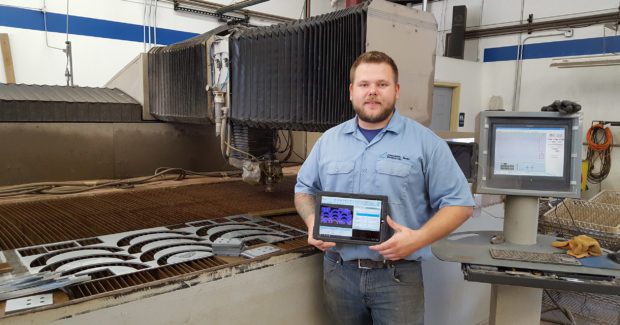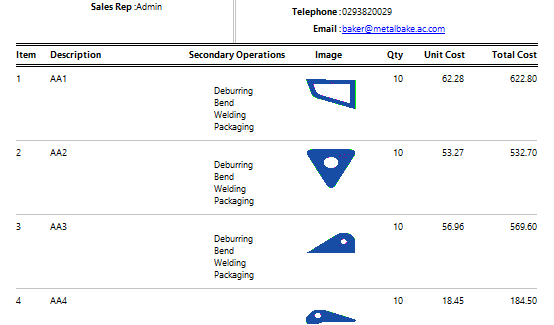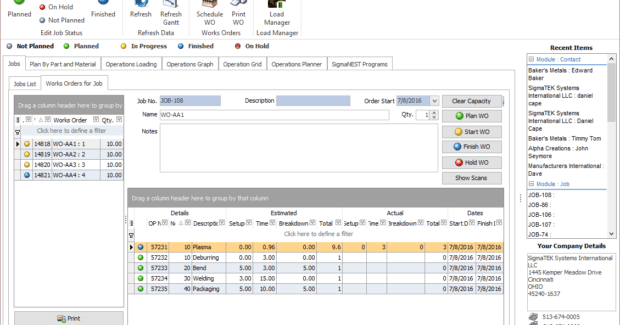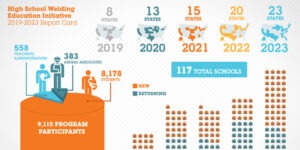Six Business Processes Every Shop Should Micromanage
In Industry 4.0, process micromanagement is the new baseline for shop operations, an opportunity to increase your bottom line in every step of your business. It’s a tough feat to accomplish, but the integrated MRP functions found in next generation nesting software can help you make it a reality. Here’s how.
Posted: July 29, 2016
s we enter Industry 4.0, next generation nesting software is streamlining process micromanagement as the new baseline for shop operations. Micromanaging is effective and more important than ever in the new job shop environment, especially micromanagement via the integrated material requirements planning (MRP) functions of your nesting software, which represents an opportunity to increase your bottom line in every step of your operations by eliminating misquotes and ineffective business procedures, removing mounds of irrelevant paperwork and material waste. The tough feat of developing a truly efficient job shop is not a problem solved overnight, it’s a continued investment that leads to maximized profitability.
CUSTOMER RELATIONSHIP MANAGEMENT
Shops that use a customer relationship management (CRM) system that is separate from their nesting software need a more consolidated operating solution because it is essential to have fluid movement when managing diverse job shop projects with customers. Leveraging basic CRM functions to communicate and track jobs throughout their entirety while efficiently completing the fabrication process is a sure way to maintain harmony between your jobs and customers. Next generation nesting software provides a robust MRP solution for this purpose: an integrated business system module that is the graceful connection shops need for optimal business practices. Not only can a shop perform their everyday CRM tasks, but they can also organize campaigns that promote new developments worth publicizing.
QUOTING
Quoting high prices for jobs based on unsure material and labor costs can take a shop out of the running for valuable new business. If your quote is beaten by another job shop with more efficient quoting practices, you just lost the job. Quoting can be a nightmare and perhaps the hardest part about taking on an order. If a quote is too low, your shop runs the risk of wasting time and money to complete the job. If a quote is too high, you’ve most likely lost the sale.
Next generation nesting software uses integrated quoting functions to estimate jobs consistently and accurately through an excel file interface with the standard shapes library. It imports the CAD files of the job being quoted and calculates accurate production time estimates and weight allocation based on material grade and machine process (laser/plasma/waterjet/oxyfuel). Then it automatically applies costs and modifiers, including size of order (total weight), urgency modifier (e.g. parts needed tomorrow), quality modifier (heat number certificates delivered), etc. Previous quotes can be pulled for repeat jobs or for comparison in seconds. Price fluctuations no longer take hours to figure out, only seconds. No more getting different prices from different sales people.
Accurate pricing can be applied to materials fast enough to get your quote to a prospective customer before the competition and secure the order. Not all jobs are a simple input and output. Some customers want you to go the extra mile with special instructions that may require sub-contracting/RFQ management. But integrated quoting functions make this an easy part of the quote process that still allows you to deliver favorable quotes to your customers quickly.
ORDER ENTRY & SCHEDULING
Your shop won the customer over with the quote. Now it’s time to start the job. Hopefully you are not the only person giving quotes and taking on jobs. The multitude of orders that are constantly being processed can lead to double scheduling and order entry errors. Don’t overbook your machines and cause a missed deadline or under delivery of your customer’s expectations. When entering the order, it’s important to know if all of the required materials and equipment are allocated to accommodate the job. An effective environment for order entry and scheduling is knowing when to run a job and that the shop has what they need to complete it. Integrated MRP uses overload prediction, inventory and storage tracking, purchasing needs and history, and scheduling features to locate materials quickly, use remnants when it makes sense, and look ahead on the shop workload. From taking the order to processing the jobs, integrated MRP takes guessing out of the equation.
SHOP FLOOR DATA
Who does what, when, where, and why? You get the job. You schedule it. But who actually does the work? Don’t scramble to assign priorities to your employees. “From taking the order to outputting the part” is a complex process that requires a harmonious relationship between the tasks of loading, nesting, managing, machine capacity and de-nesting multiple work order sheets that results in less downtime and more efficient output. Integrated MRP can take advantage of new shop floor data capture features that have the capability to automatically handle the logistics of a job via a tablet on the shop floor. The data on your tablet tells your operator what parts to cut and what jobs they belong to. This allows for fluid movement from cutting to sorting the parts.
LOGISTICS & QUALITY ASSURANCE
The parts are cut and sorted. Now it’s time to make sure those parts get from A to B in a timely, effective, and satisfactory manner. It’s important to realize that once those parts are cut and sorted, the job still needs to remain your top priority. Not only must these parts get to your customer, but they need to be exactly what that customer had in mind – the job ends only when the customer has the parts in hand and a smile on their face. Integrated MRP follows through the entire job, not just through production. Track successful delivery of the parts to your customer as integrated MRP takes on the logistics management for you. Not only will the parts get where they need to go on time, but they will also have the proper documentation to prove a successful fabrication process: material traceability, sheet chemical composition, and original paperwork, including instructions, will be at your customer’s fingertips.
PAY DAY
The customer is happy, you’ve shifted your focus onto the next job, and it’s time to get paid. Improper invoicing and the gray area that often surrounds payment terms is not only inconvenient, it can lead to business failure. All transactions and monetary documentation must be tracked. Having cohesive accounting functions will give you the transparency needed to understand your bottom line. Integrated MRP meets this need by performing invoicing, complete accounts receivable functions, and serves as a database for your own transactions as a customer to your suppliers. With integrated MRP, you have easy access to the complete expenditure on your own behalf as a business and for each job. You can see the profit brought in on each job. But that’s not enough. Using integrated MRP, you can use this data for a cost analysis to amend future processes to increase your ROI.
A higher bottom line and ROI are the golden tickets to success, particularly in small businesses like fabrication job shops that are more susceptible to failure that results from inefficient business practices. The integrated MRP functions found in next generation nesting software can take the insecurities out of business operations and move a shop to the cutting edge of competitive advantage.
















